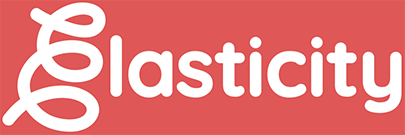Poor Mark. Poor, poor Mark Zuckerberg.
He’s been having a number of challenges – some better reported than others. But here’s one you may not have heard about. If you work in marketing or advertising, it will have significant impacts on how you reach and engage your audiences.
As of January 19, Facebook and Instagram removed detailed targeting options related to topics some may have perceived as sensitive such as causes, organizations or public figures that relate to health, race, ethnicity, political affiliation, religion or sexual orientation.
This is part of a much broader trend. While precise targeting has led to creating highly personalized experiences and delivery of relevant content to users, there is a rising sensitivity for people to be identified based on their affiliation to social causes, health conditions, or other immutable demographic characteristics.
This certainly throws the most significant wrench into digital media planning and buying as we know it since, ironically, Facebook’s IPO. That was when social media significantly evolved into a pay-for-play endeavor for brands and organizations on its platforms.
Here’s the substance: existing ad sets with impacted targeting options will continue to run until March 17, 2022, but may require media buyers to update targeting selections. After March 17, impacted ad sets may be paused to prevent incorrect deliveries if the impacted targeting options are used for exclusion purposes. Impacted targeting options will automatically be removed if they are being used for inclusion purposes.
Graciously, Facebook (Meta) will provide alternative targeting recommendations within Ads Manager when possible. You’re a generous prince, Mark.
As an agency that often works to reach multicultural audiences, we first experienced the impacts of these changes while tasked with raising public health awareness amongst audiences that included adults ages 18 – 29 as well as African American and Hispanic audiences. It resulted in our ethnicity and race ad groups being completely removed and made no longer available whatsoever. #Goodtimes.
As always, we are already developing solutions, however imperfect they may be. There is no single strategy that can replace the targeting capabilities that are being lost. However, there are some potential strategies that can help increase targeting to ensure your ads are delivered on target. Some potential approaches include:
- First-Party Data (Email): When properly following data gathering laws, email lists may be the new top data source. If you have a list of customers’ emails that have opted into having their emails gathered, you will still be able to target those same users on Facebook if their profile is connected to the email your business has.
- Lookalike Audiences (Email): Similar to First-Party Data, if you have a properly gathered and vetted email list, Facebook will allow you to target users that share a similar profile of actions as your users (based off of email list).
- Lookalike Audiences (Facebook Pixels): Just like with emails, Facebook is able to evaluate your current website visiting audience (where the Facebook pixel is present) and use that data to find people with similar attributes on Facebook. If you have a purchase, lead form, or action that you value and is being tracked by a Facebook pixel, you can find like-minded users on Facebook.
- Lookalike Audiences (Facebook Page Followers): If your current Facebook organic audience has been taking the actions your client wants, then Facebook gives you the opportunity to find similar audiences to your current followers.
- Behavioral Audiences (Interests-Based Audience): Excluding demographic qualifiers, what do you know about your audience from your research, social media pages, and conversations with them? Chances are whatever they are interested in, you can find a similar targetable interest to use in Facebook.
- Test a Hypothesis Audience (Interests-Based Audience): At the end of the day, no audience is guaranteed to perform. Therefore, you need to be willing to take what you know about your client’s audience and test new segments when needed. For example, did you know that video game lovers and doctors in training share the same trouble with finding a job because they are used to systems where they are given the step-by-step processes of how to achieve success? – If you were selling a product/service around procrastination, those are 2 audiences that you would generally not put together.
None of these are perfect, and all will require considerable more initial research to understand the habits of our target audiences.
Our presumption is that we will ultimately need to use the Facebook and Instagram platforms differently and diversify our channels to allow us to target based on gender, race, background, health and other factors.
Ultimately, change always – always – represents an opportunity for growth, the evolution of how we can be more strategic in building larger campaigns from scratch, really digging into the research of who our audience really is, and outlining those behaviors.
There’s more to come but stay tuned! And again, don’t forget poor Mark. We’ll take up a collection for him at some juncture.



